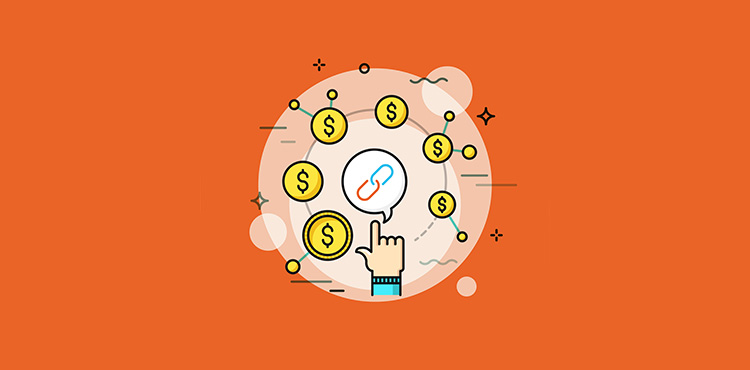Rewarding employees for their hard work and achievements is a powerful tool in driving motivation, productivity, and overall job satisfaction. After all, who doesn’t appreciate a pat on the back or a little extra recognition for their efforts? Also, a recent Deloitte Insights survey found that companies prioritising employee recognition are 12 times more likely to achieve positive business outcomes.
But when it comes to selecting the right incentives to inspire and foster employee performance, it’s important to choose wisely. Choosing the right reward can be the difference between a fleeting smile and long-term employee engagement.
Today, in this blog post, we’ll explore practical tips for selecting the most effective incentives to propel your team toward success.
So, let’s dive in and discover how you can create a workplace environment where everyone feels valued and motivated!
The role of rewards in motivating employees
Rewards play a crucial role in motivating employees and driving their performance to new heights. When employees feel their hard work is recognised and appreciated, it creates a sense of value and belonging within the organisation. This positive reinforcement encourages them to continue putting forth their best efforts.
However, it’s important for employers to remember that not all rewards have the same impact on every employee. People have different preferences when it comes to incentives – some may find monetary bonuses motivating, while others may respond better to non-monetary rewards such as flexible working hours or professional development opportunities.
To truly motivate employees through rewards, organisations need to consider individual differences and tailor incentives accordingly. By understanding what drives each employee personally – whether it’s recognition, career growth opportunities or tangible benefits – employers can design reward systems that create maximum impact across the board.

Here are some different types of incentives that you might incorporate in your own company reward system:
- Financial incentives – Bonuses, pay raises, and cash awards;
- Non-cash incentives – More time off, flexible working hours, and chances for professional growth or career advancement;
- Recognition awards – Certificates, plaques, and trophies for great performance;
- Public recognition – Highlighting an employee’s accomplishments in public forums like business meetings, newsletters, or social media, and;
- Employee recognition programs – Recognising and rewarding staff members who continuously go above and beyond.
Recognising and rewarding employee contributions is not just about appeasing individuals; it’s about creating an environment of appreciation where everyone feels valued for their unique contributions toward achieving common goals.
Benefits of rewarding and recognising employees
Maslow’s hierarchy of needs reveals that after physiological and safety needs are met, we seek self-actualisation needs. In the business world, this translates to feeling like you’re part of a valued and appreciated team where you can advance.
When it comes to enhancing workplace productivity and morale, rewards and recognition can play an important role. Many corporate incentive structures rely heavily on tangible reward systems. McKinsey found that nonfinancial recognition drives 55% of employee engagement and is the top driver of employee experience. It shows that people depart because they don’t feel valued by their employers.
So here are the benefits of rewarding and recognising employees-
Boost the morale of your staff
When employees receive recognition for their achievements, they feel a sense of pride in their work and are more likely to have a positive attitude toward their jobs. This positivity spreads throughout the workplace, creating a supportive and encouraging environment.
Increased employee retention rates
Rewards and recognition programs can positively impact employee retention rates. In a survey conducted by Globoforece, 68% of HR managers agreed that recognition programs help keep good employees. Employees who feel appreciated for their contributions are more likely to stay with the company long-term. This reduces turnover costs associated with recruiting new hires.
Promote healthy competition
Rewards encourage healthy competition among employees. When employees see how they stack up against their peers, they continuously strive to improve their skills. When they reach the top of the list, they will feel successful, inspiring their teammates to do the same.
Boosted loyalty and advocacy
Recognising and rewarding employees builds a sense of loyalty and commitment toward the organisation. Satisfied employees become brand ambassadors, speaking positively about the company and influencing others to join or support the organisation.
Stimulated innovation and creativity
When employees feel appreciated and supported, they are more likely to take risks and think outside the box. Recognising their innovative ideas and rewarding their contributions encourages a culture of creativity and innovation within the organisation.
Ultimately, though subjective measures such as increased happiness or improved teamwork may be difficult to quantify on paper alone, these intangible benefits play an essential role in fostering a positive work culture where everyone feels seen and appreciated.
Ways to select the right incentives to drive employee performance
While rewards focus on recognising or making up for past actions or successes, incentives are meant to change current actions or behaviours by giving a motivational boost. Individual preferences, the nature of the work, and the implementation setting can all affect the efficacy of rewards and incentives.
The best motivational strategies use a mix of rewards and incentives for employees designed for both the individual and the desired situation.
According to a 2022 survey by the Incentive Research Foundation, the following are the top incentive offers:
- Cash;
- Gift cards;
- Gifts;
- Points towards a larger reward;
- Individual travel, and;
- Non-travel experiences.
But how do you select the right incentive offer? Here are some actionable ways to do that-
Understand your employees needs and preferences
Do you know your employees’ likes, dislikes, goals, and concerns? One of the best ways to determine what kind of incentives they will appreciate is to ask them. You can learn a lot about the incentives that mean the most to them by conducting surveys or hosting focus groups.
Find out if employees would be more motivated by monetary or nonmonetary rewards. Employee participation in decision-making ensures that rewards meet their requirements. Employees benefit from open-door policies and regular feedback channels because they provide a voice to express issues and share ideas.
Fit in with the ethos of the business
The incentive you give out to your employees should reflect the ideals of your business. Are the employees looking for work-life balance, and your company promotes the same? Incentives like flexible scheduling or working from home help retain them. Make sure the rewards correspond with the values you wish to see reflected in your workforce.
Another factor to consider is the specific goals you want to achieve. If you aim for increased sales, offering commission-based bonuses could be a great incentive. On the other hand, if teamwork and collaboration are key in your organisation, recognising and rewarding successful team efforts might be more appropriate.
Give separate incentives for both individual and group effort
Appreciate individual success as well as collective efforts while rewarding employees. Use a combination of the two to provide due credit to a wider range of achievements. Team incentives encourage members to work together to achieve a goal, and individual incentives motivate people to do their best on their own and as a part of the team.
Imagine managing a complex software development team. You set up a reward system that fairly weighs individual performance against teamwork. After each project milestone, you celebrate to honour the team. This emphasises the value of cooperation and the fulfilment of common objectives.
You also reward a team member, “Innovator of the Month,” for an innovative solution, major contribution, or great expertise. This individualised appreciation inspires everyone to contribute their special skills and drive for success.
Tie incentives to performance metrics
When incentives are tied to a defined set of performance indicators, they give workers something concrete to work toward. Create well-defined tasks for people or groups and incentivise them for their success. For example, if an employee meets or exceeds their sales quota or finishes a project early or with high quality, they might receive an extra bonus or commission.
Offer a variety of incentives
When it comes to motivating employees, a one-size-fits-all approach may not be effective. Different people are motivated by different things. Consider offering a mix of incentives such as cash bonuses, gift cards, extra time off, flexible work arrangements, or opportunities for career advancement. By offering a range of incentives, employers have a better chance of appealing to the diverse motivations of their workforce.
Publicly recognise and reward employee efforts
Publicly recognise and reward employees who consistently perform well. Such validation can be a powerful motivator, as it affirms that the organisation values and recognises its efforts. Moreover, publicly recognising and rewarding employee efforts creates a positive and supportive work culture.
Acknowledgement can be in the form of awards, certificates, or even a mention in company-wide communications. Let’s consider an example from a sales department. Imagine a team of sales representatives working towards achieving monthly targets. The organisation implements a publicly visible leaderboard showcasing top performers based on their sales numbers. Every month, during a company-wide meeting, the CEO publicly recognises and rewards the top three sales representatives with certificates and monetary incentives.
In this scenario, the public recognition and reward system is a solid incentive to drive employee performance. The sales representatives are motivated to compete with their colleagues to secure one of the top spots on the leaderboard and earn the recognition and rewards associated with it.
Provide opportunities for skill development
In addition to monetary incentives, consider offering employees opportunities for skill development and personal growth. This could include training programs, mentorship, certifications or educational subsidies.
When employees perceive that their organisation invests in their professional development, it fosters a sense of loyalty, motivation, and engagement. They are more likely to see a long-term future within the company and be committed to its success.
Implement a peer-to-peer recognition program
Encourage employees to recognise and reward each other’s efforts through a peer-to-peer recognition program. According to research by PWC, 50% of employees said that recognition from their peers is essential for them.
Rather than relying solely on top-down rewards or monetary incentives, this program empowers employees to recognise and reward each other based on their unique contributions and skills. It taps into individuals’ intrinsic motivation, making the incentives more relevant and impactful. This can foster a positive work culture and create a sense of healthy competition among team members.
For example, let’s say there is an employee named Sarah who consistently goes above and beyond in her role as a marketing strategist. Her colleague, John, recognises her exceptional creativity and the positive impact she brings to the team. Through the Peer-to-Peer Recognition Program, John has the opportunity to acknowledge Sarah’s efforts and express his gratitude publicly. This recognition could be something as simple as a personalised thank-you note, a team-wide email highlighting Sarah’s accomplishments, or even a small token of appreciation like a gift card.
Key takeaways
Choosing the correct incentives to increase employee performance is a strategic decision that can decide the fate of motivated employees. It is not merely a checkbox on the HR to-do list.
Again, it’s not a one-size-fits-all situation. Each company has its special blend of people with different goals and objectives. The key is to find out what motivates your team and give them more of it, whether that’s money, time off, training, or public acclaim.
Ultimately, selecting the appropriate incentives boosts employee performance and contributes to a positive and productive work environment, leading to increased employee satisfaction and overall organisational success.
About the Author
Sapna Singhal is a Freelance Content Writer who specialises in writing data-driven blog posts around B2B Marketing and SaaS. She writes content that only generates millions of traffic but also helps clients double down on their revenue. When she’s not writing, you can find her chit-chatting with her sisters or reading books!


